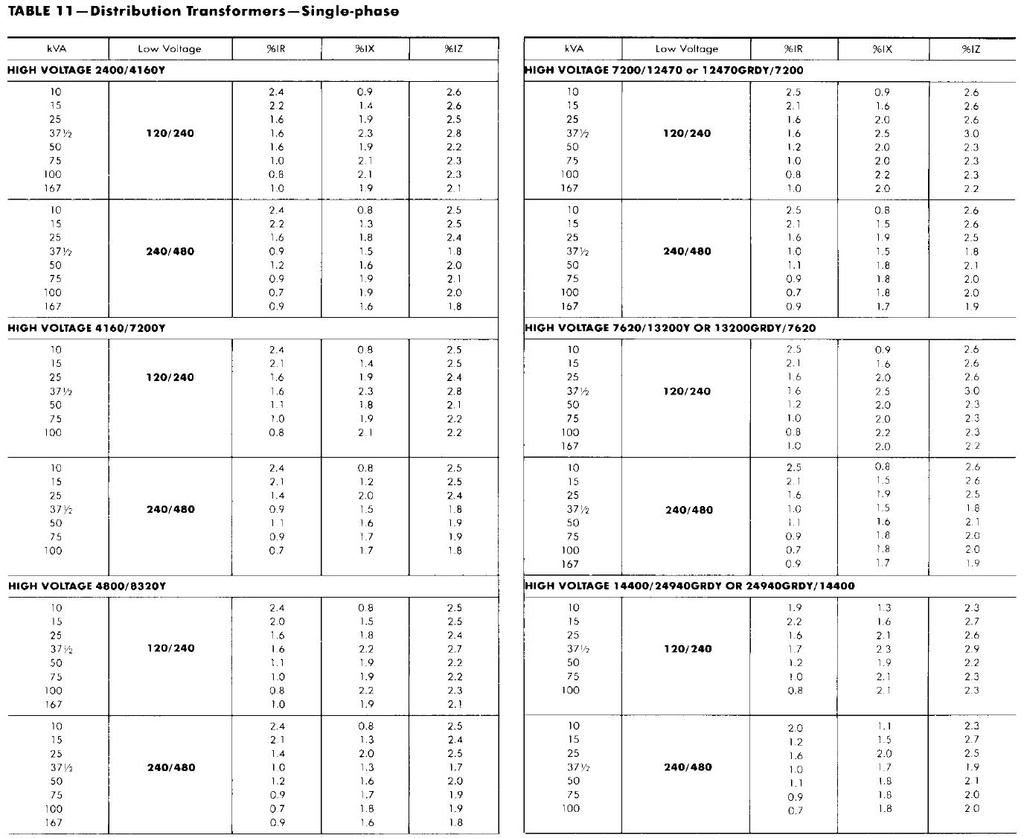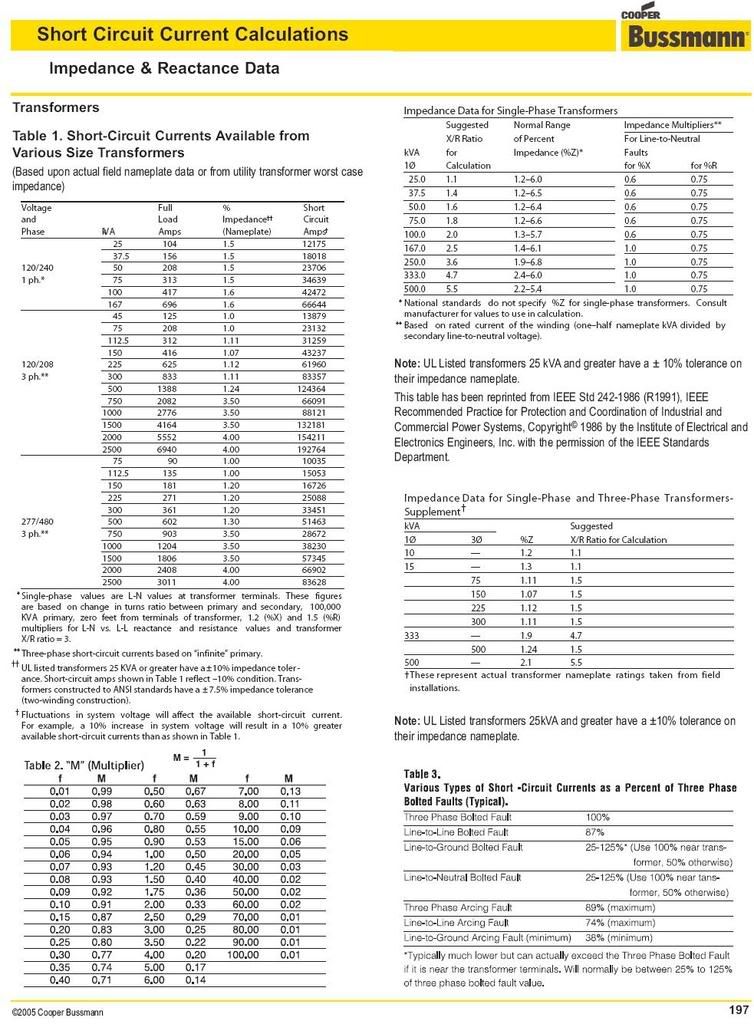The ultimate accuracy with Z Numbers...
The ultimate accuracy with Z Numbers...
I've done several small Power Studies for an Air Force Base, and their requirement was that the actual factory test numbers for the given transformer be used in the analysis.
Equipped with a transformer s/n, I would call Cooper (for example) and give them the serial number of the transformer. They would connect me with the group that tested the transformer. From there, I was provided with the measured impedance and the measured X/R ratio for that specific transformer.
If the unit was not available when the study was completed, I would have to go back and redo the numbers based on the actual data after the unit was received.
It was silly because the transformers were built to a given standard +/- a small percentage.
Eventually, if the transformer data wasn't available, I would complete the study with 2 sets of results, one at the mimimum impedance and the other at the maximum impedance - which included Short-Circuit and Load FLow Analyses.
Typical size was on the order of 75 to 300 kVA.
JM
edited for sp



